I travelled to Ha Giang though not at the time of the early rainy season and the rice harvest or when the buckwheat flowers are in bloom. However, Ha Giang is still surprisingly splendid in August, the lush green grass stretching endlessly towards the horizon, the towering trees lining the jagged cliff edge and the bustling markets imbued with the distinctive aromas of corn wine. Visiting Ha Giang was like living in a dream and the journey back to the land of the rocky mountains is one that I have wanted to make for a long time.
[rpi]DISCOVER THE HAPPINESS ROAD
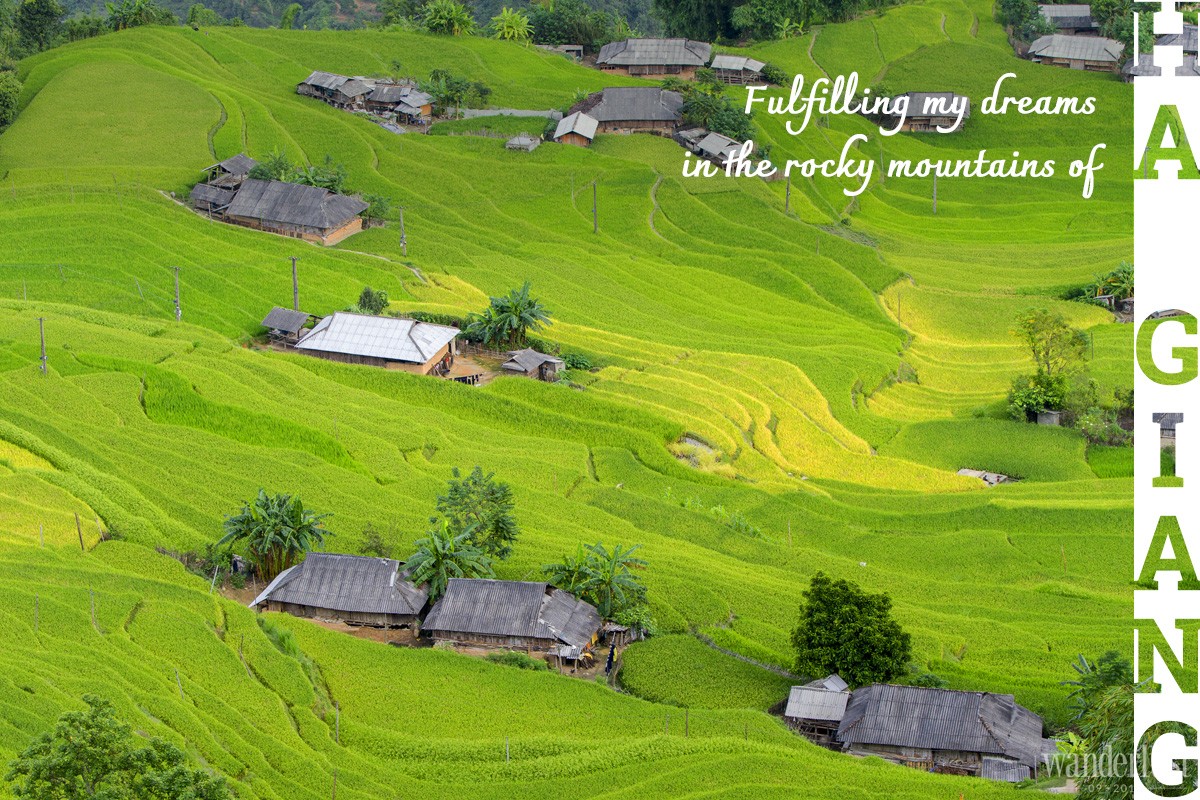
Commencing from the centre of Ha Giang City, passing through Dong Van Stone Plateau, Ma Pi Leng Pass and Meo Vac, the Happiness Road is a 185km stretch. The Happiness Road runs through the undulating mountain ranges, hemmed in by stunningly spectacular mountains on one side and immense abysses on the others, so it can be a risky route for drivers easily distracted by epic vistas. The narrow road is only wide enough for two lanes, sometimes one vehicle must stop to give the way to oncoming vehicles. The Happiness Road is full of hair-raising bends, scooters struggle with the steep inclines, motorbikes have to restart constantly and trucks move at a snail pace.
Occasionally, you will see the Mong people walking on the side of the road whilst carrying baskets of corn and grass bundles on their backs. It was an exhilarating ride and I thought about the road a lot during my time in Ha Giang. Ha Giang is located in the north of Vietnam and home to a perilous mountain complex that sits between 800m and 1,200m above sea level.
Ha Giang also shares a 300-km-long border with China, thus it is geographically important for the country. In the 1950s, Ha Giang began to develop thanks to an array of construction works, starting with building roads. However, due to its steep mountainous topography, the construction not only required the vast amounts of materials but also would not be viable without the belief, determination, consensus and even sacrifice of the workers.
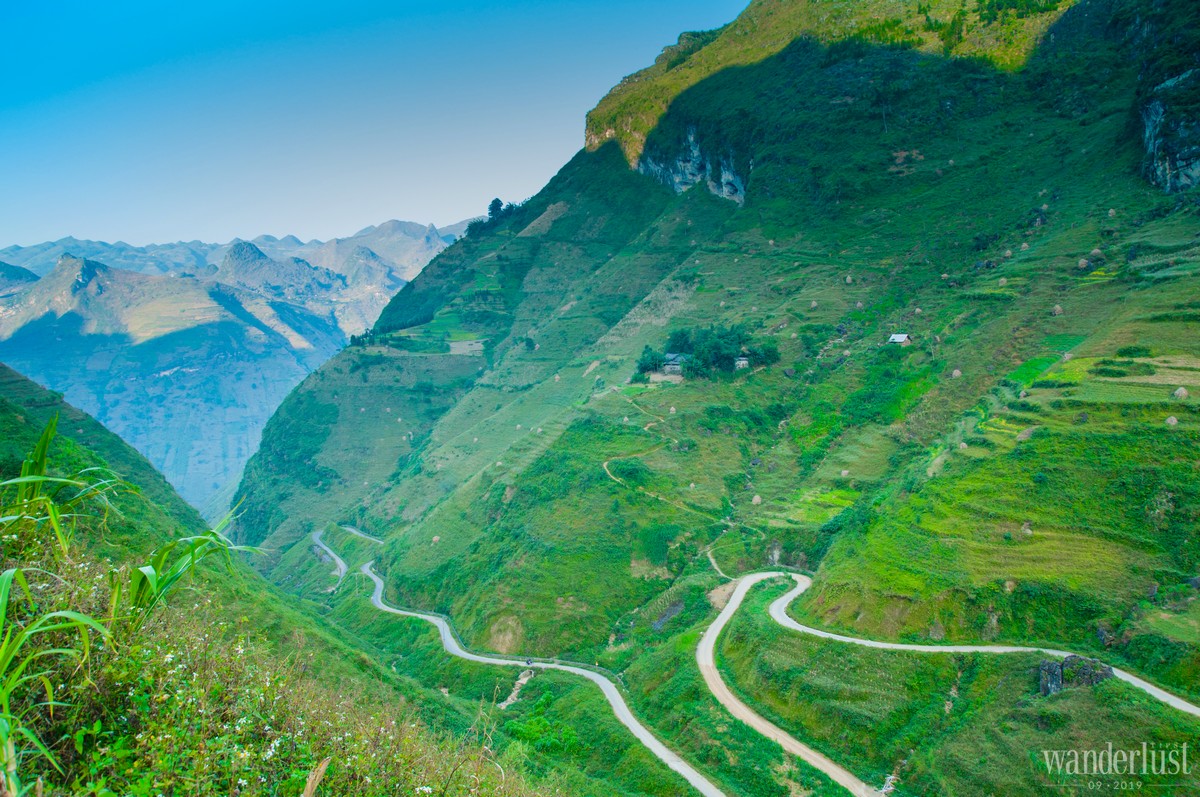
The Happiness Road is witness to all of this and becomes a strong symbol of will and persistence. Thousands of youth volunteers from the plains and the small villages contributed their efforts to expand the road. Ma Pi Leng is a treacherous and rugged pass, so the team in charge of building the road held a small celebration before working each morning to pray for safety because of any carelessness, they could slip and fall into the abyss. It is irrefutable that when the road was inaugurated, a lot of people had to be sacrificed in order to build such a unique road. All of the difficulty and hardship was not in vain, as this iconic route has brought significant happiness for generations.
Today, the Happiness Road is an important route for transporting goods from the major towns and villages to the mountainous areas. This is also the most extraordinary road in Vietnam for discerning adventurers to put their driving skills to the test on the precarious and winding roads. Additionally, photographers can appreciate the stunningly spectacular beauty with the roads snaking through the majestic mountains, the lush rice terraces, the vast cornfields and the peaceful villages in the morning sunshine.
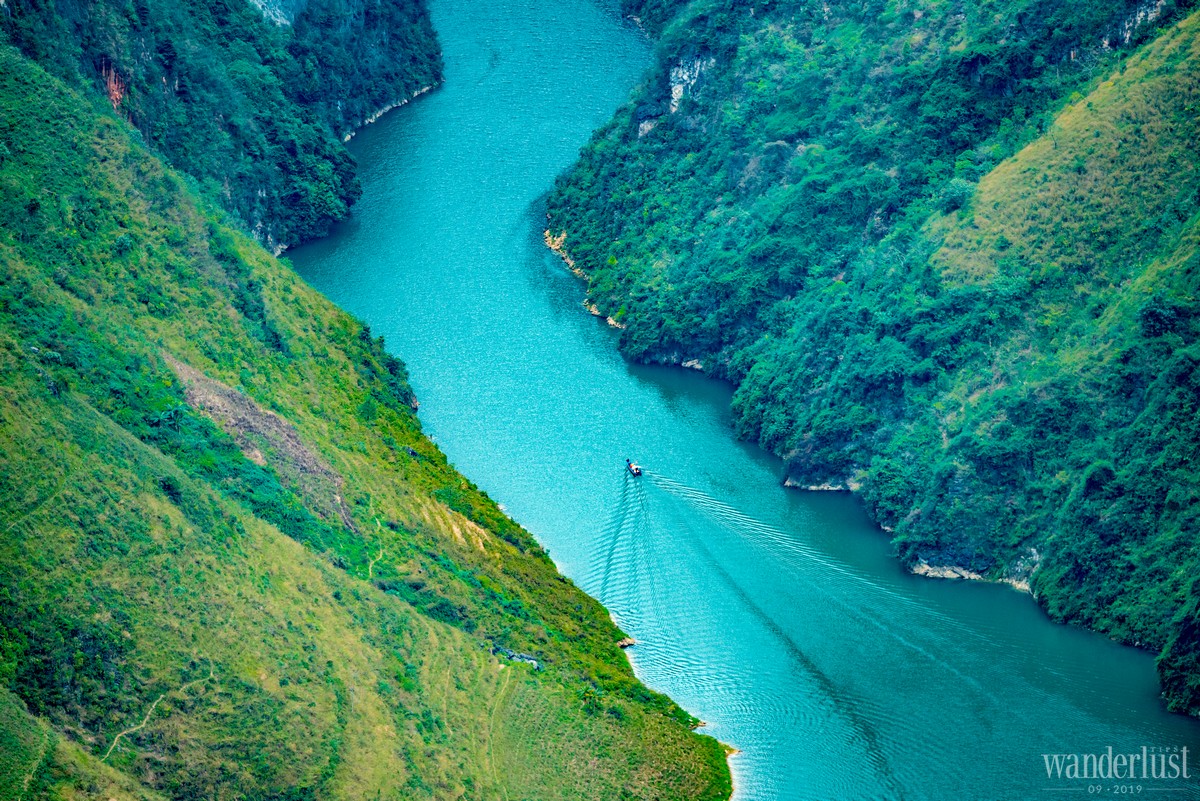
Driving along the Happiness Road quite literally took my breath away, traversing those winding roads felt like jumping on a zip line towards the high mountains. I was also overwhelmed by the spectacular natural scenery surrounding the road. The fluffy white clouds floating across the undulating hills, the alluring Nho Que River curving around the foot of the mountain. During this trip, I came to the realisation that happiness can be found by taking my own path, in spite of its difficulties and challenges. Just move slowly and peacefully with an optimistic outlook for life. A little like the H’Mong and Dao people who still carry bundles of grass on their back diligently or herd buffaloes leisurely amidst the hustle and bustle of the daily grind.
THE DISTINCTIVE FLAVOURS OF CORN WINE, THE EARNEST SOUND OF PAN PIPES AND THE ENCHANTING FIRE DANCES
Writer To Hoai wrote a memoir of the Mong people living in the Northwestern highlands. In spite of having a difficult living situation, they always adapt and pay homage to their origins. A little is like daggers standing firm on the face of the rocky mountains. Although I cannot wholly recall his memoir, that powerful imagery still sticks in my mind, it reminds me of the communities unwavering devotion in a volatile world. After the trip, I realised that the image of the dagger symbolises the power of belief, mostly the diligence, toil and effort of humans.
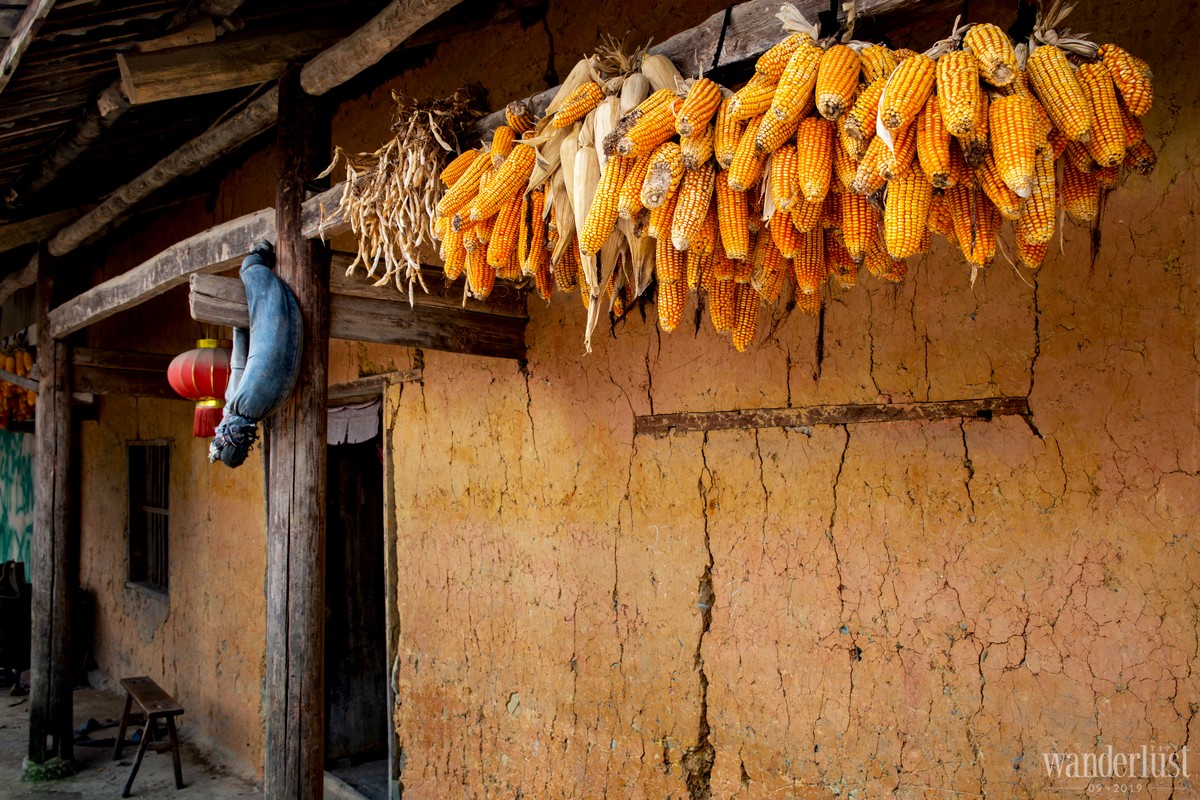
Ha Giang is an undulating mountainous region, several flattened areas here were built with humans’ blood, sweat and tears. Besides the high mountainous topography, the steep slopes covered with thick layers of humus intertwined with rock are common in Ha Giang. Life here is intense, the corn and rice fields stretch from the foot of the mountains right up to the peaks. Maize in Ha Giang is not as high as the crop in the villages, despite the stunted growth and smaller grains, the quality is still quite good. It is quite remarkable for maize to grow in the rocky mountainous areas as the conditions are quite harsh, its enduring vitality is very similar to the people here.
When the harvest arrives, the grains of corn are dubbed “the pearl of heaven”. Local people deftly produce an exquisite drink called corn wine that has an extraordinary flavour unique to Ha Giang. Whether visitors to the region or old friends, everyone will merrily come together to enjoy cups of corn wine whilst sharing stories, worries and confessions. The delectable taste of corn wine slowly suffuses in the mouth, indulge in the feeling of warmth and love.
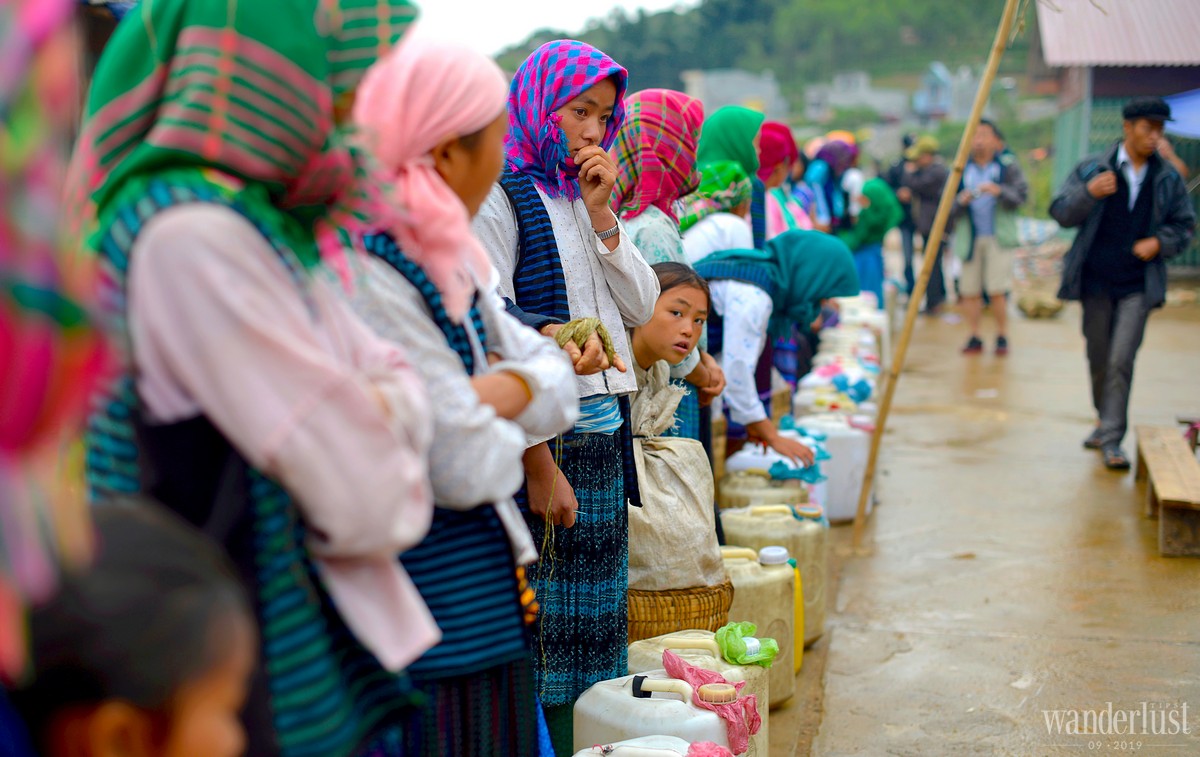
On New Year holidays or festivals, after savouring cups of corn wine, people invite each other to play pan pipes or perform fire dances. According to tradition, before performing, people usually use corn wine to spread on the pan pipes to fuse the human’s soul and the pan pipes’ soul together. Sounding the pan pipes does not resemble the vibrato of T’rungs, or the singsong of flutes, its melody is passionate and warm, making its marks on people’s hearts. The sound of pan pipes intertwined with the warm taste of corn wine in a sparse mountainous region makes it easy for people to contemplate the dark moments in their lives.
If the panpipe is the distinctive identity of the H’ Mong people, the fire dancer is a unique feature of Pa Then people that they usually perform during village festivals. They perform the dances professionally by the glowing embers of the dazzling fire. For Pa Then people, it is not just a fire dance. It is to show gratitude to the gods for providing them with a good harvest, a desire to banish the devils and a hope that fire can warm not only the coldest areas in the village but also the soul of the people.
WAVING GOODBYE TO HA GIANG IS NOT EASY AFTER DISCOVERING THE BUSTLING MARKETS
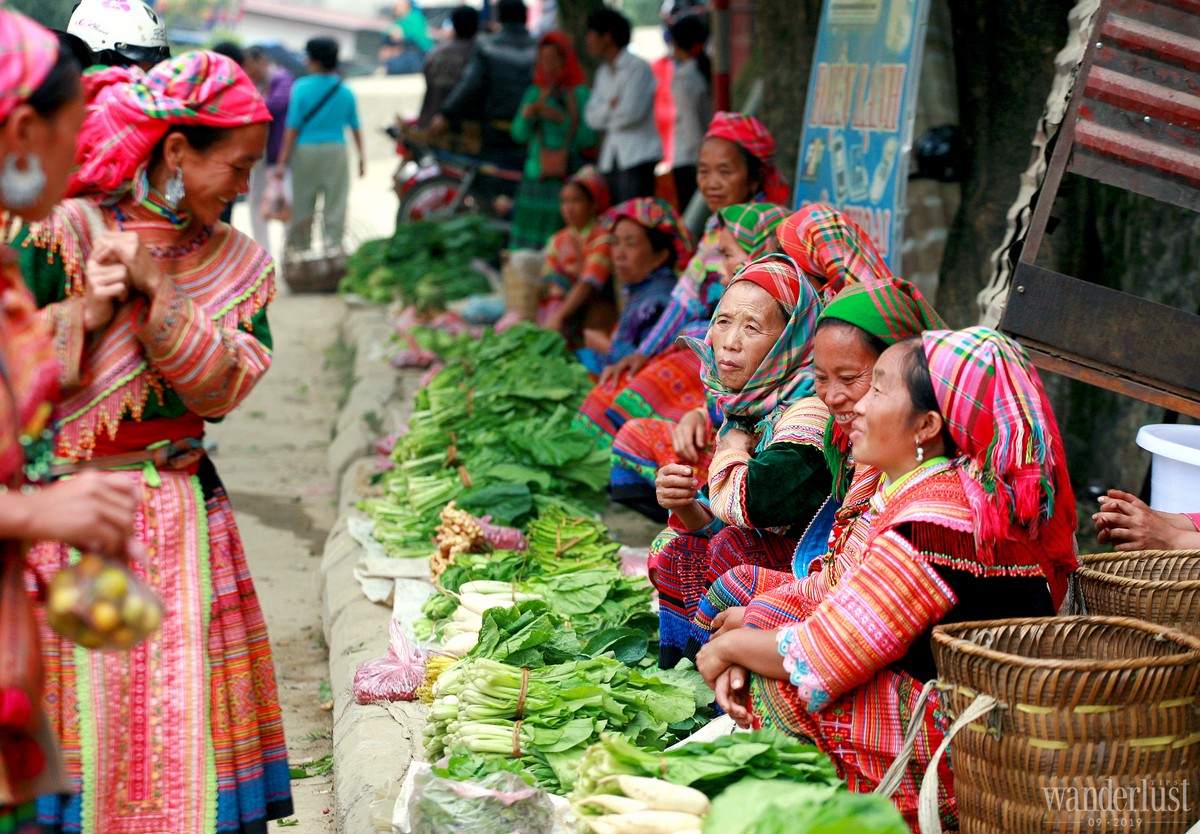
Before returning to Hanoi, I did not forget to spend a day visiting the market. The fair market is a unique cultural part not to be missed when visiting Ha Giang. There is an array of the fair markets here, but the most famous and largest market in Dong Van fair market. The market only assembles on Sunday. At the crack of dawn, people begin going to the market, they have to cross over the mountains.
The beautiful girls in colourful outfits meander along the mountains whilst cracking jokes. The market is a hopeful occasion in the heart of every person because it is not only a place to trade but also a place to share stories and meet people. People take the opportunity to tell each other stories of the past, crops, family and farming. The market is buzzing but not unruly and everyone is busy going about their work.
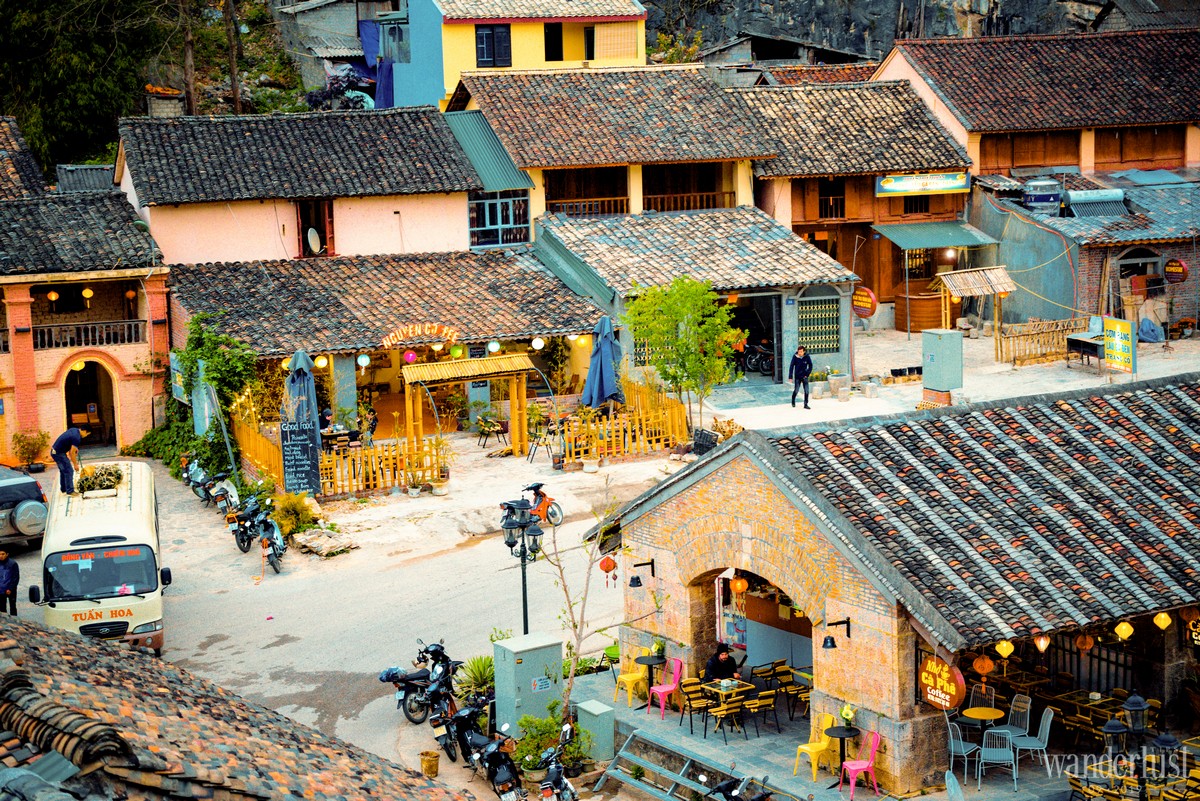
The market ended around 2 pm. Although it is a place that people are very fond of, they still have to begin the journey home because the road is full of obstacles. People drink a cup of corn wine together before parting, and then they shake hands firmly, smile and promise to meet again at the next market. It was not until everyone started to leave that I appreciated this act of greeting. Several unfamiliar faces waved and smiled graciously at me. Even after their hardships, people still smile brightly, remain optimistic and still have hope for the future. Perhaps that is the reason why peaceful land makes everyone feel a bit warm and fuzzy inside because despite visiting for the first time they realise their desires to follow simple dreams in life.
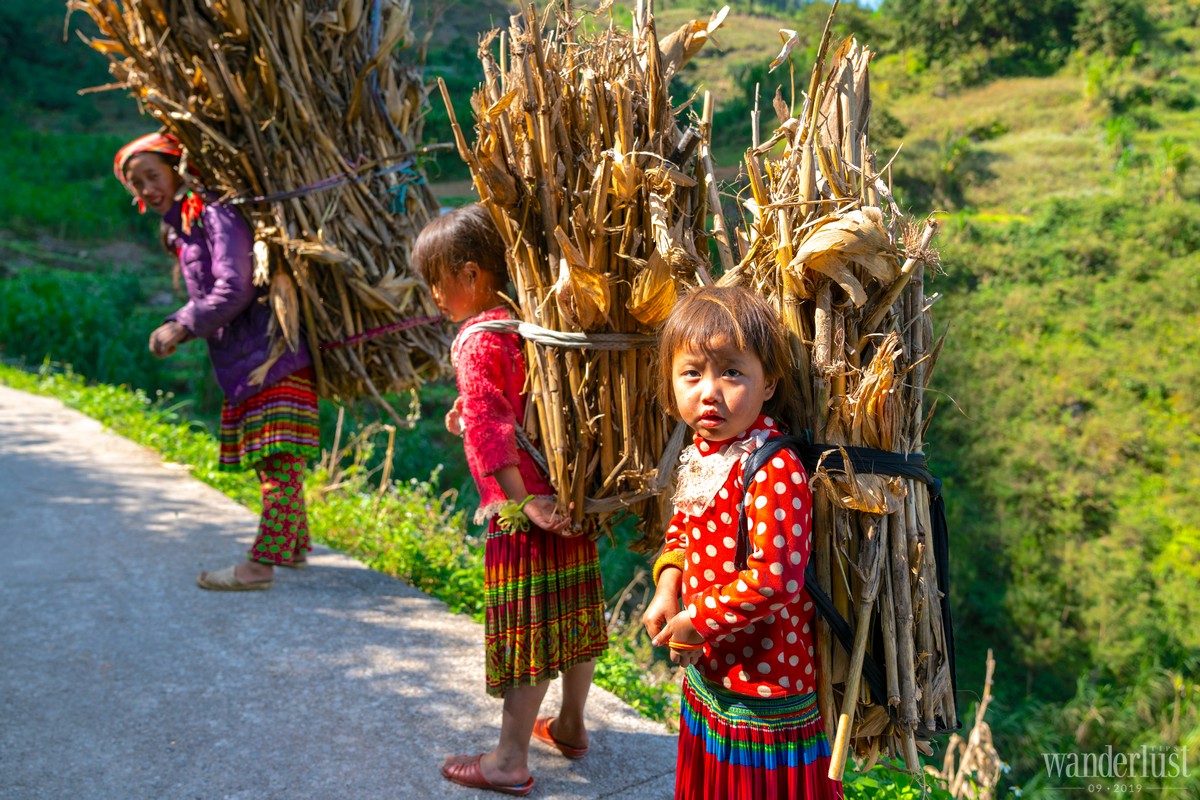
Returning from the market, my group and I went to the hotel to pack up our things to go back to Hanoi in the following morning. After more than a week of meandering around Ha Giang, many people talked of the iconic landscapes of Ha Giang, because it is so beautiful, a real majestic and poetic beauty. As for me, I am indeed impressed with the landscapes, but more importantly, I fell in love with the people of Ha Giang, the unique ethnic cultures and the beauty of their souls oozing from every aspect of their daily lives.
On our journey back to Hanoi, our group stopped at a roadside station on the Happiness Road, we just sat and observed the children playing. The Mong, Dao and Giay children laugh innocently without a care in the world. I gave some candy from my backpack to them and they thanked us with a bunch of flowers picked from the forest. Everything was so unspoiled and heartfelt.
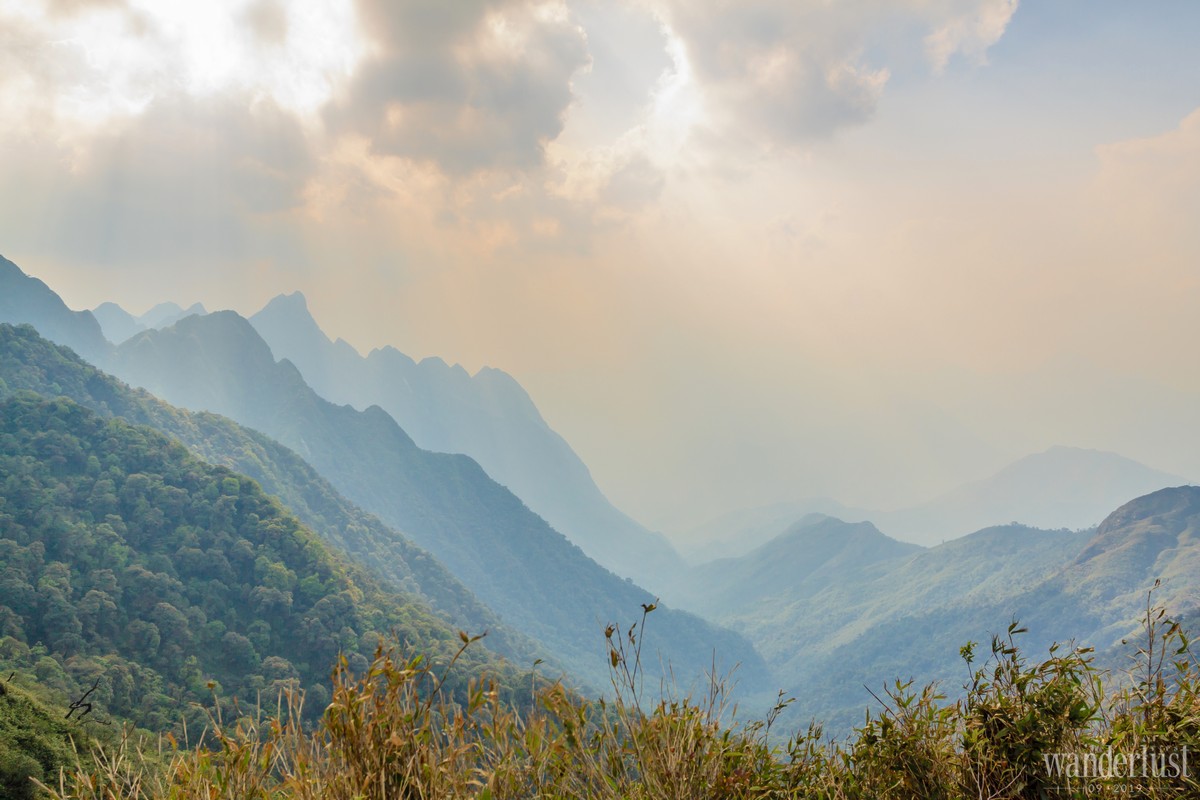
A member of our group broke into song “Peaceful Sky”: “… After the long nights, the sunshine always brings love into your life, hold my hand to the peaceful sky…” Perhaps this stunning place and this exact moment is truly the peaceful sky. Inhale the faint scent of forest orchids. The forest orchids are not as brilliant as phalaenopsis or oncidium, they are small orchids with ivory petals and only a slight fragrance. Across the villages and houses nestled on the craggy mountains, I see baskets of orchids in front of the doorways.
A Mong person told me that Mong people like to build a house where they can hear the sound of the wind, mountains and forests thus immersing the soul in the freedom of the land and heaven. The place has retained a distinctive identity for thousands of years, an identity that exudes a unique and gentle melody. If someone asks me “Will you return to Ha Giang again?”, I will say “Yes”. If one day I wanted to escape the hustle and bustle of daily life, I would pack a bag and travel to Ha Giang to live a life in the mountains found at the end of the Happiness Road.
W.Tips
![]()
MOVING
It takes about 7 hours to travel to Ha Giang City from Hanoi by car. If you catch a bus, you should go in the evening so that you can welcome the dawn in Ha Giang in the following morning. Ha Giang City also has many motorbike rental services for travellers to experience the roads and explore the famous landmarks.
![]()
BEST TIME TO TRAVEL
You can visit Ha Giang at any time of year because the place possesses a unique beauty with each season. January and February are the time for many festivals of the local people. In March, Ha Giang is more romantic with the pink tinge of peach blossom and the white of plum blossom. May and June welcome the pouring water on terraced fields. August and September play host to the ripe rice season. In October and November, Ha Giang boasts its charming beauty with the full bloom of buckwheat flowers. In December, rapeseed flowers warm the landscape despite the icy winter.
![]()
WEATHER
The rainy season in Ha Giang lasts from July to September, so you should follow weather forecasts when travelling at this time. The winter in Ha Giang begins from September to the end of the year, the temperature can drop to 0oC, so you should pack warm clothes before starting your exciting adventure in this mountainous region.
![]()
SIGHTSEEING SPOTS
>> Pho Bang Town is close to the Vietnam – China border, nearly 5km from Yen Minh – Dong Van route. The town has an ancient and mysterious beauty with moss-covered houses and tiled roofs engraved with the architecture of ancient China.
>> Yen Minh Pine Forest: Passing through Can Ty Commune and Quang Ba double mountain about 40km, you will encounter the lush green Yen Minh pine forest, which is known as the second Da Lat of Vietnam.
>> Located in Dong Van town, Dong Van Old Town is over 100 years old and only has 40 houses. Despite experiencing the ups and downs of bygone years, these houses still retain their classic beauty.
>> With an area of nearly 3,000sq. m, the H’ mong King’s Palace or Vuong Family Palace which began construction in 1919 and was completed 9 years later. The palace has a unique mélange of architecture, influenced by 3 differing styles including Chinese, French and the H’Mong ethnic people.
>> Ma Pi Leng Pass is a 20km rugged pass located on the “Happiness Road” which connects Dong Van and Meo Vac. This is considered to be the most beautiful road in the rocky plateau. However, it is also the most rugged road that challenges the courage of even the most intrepid adventurers.
>> Located between the romantic valley, Lung Cam Village of Ethnic Culture is the residence of 61 households mainly Lo Lo, Mong and Han.
>> House of Pao is the background for the beautiful footage in the famous movie “Pao’s Story”.
>> Dong Van Stone Plateau was recognised by UNESCO as a global geopark. The place not only boasts spectacular natural scenery but also preserves the long-standing culture of the Mong, Lo Lo, Pu Peo and Dao ethnic groups.
>> Tham Ma Slope is renowned for its nine extremely sharp curves, located on the Highway 4C on the way from Ha Giang to Meo Vac District.
![]()
CUISINE
The must-try local specialities include Au Tau rice gruel, Thang Co, smoked pork, carried-underarm pork, sour Pho, Chinese sausage and Shan Tuyet tea.
Dai Trang | Wanderlust Tips


[…] 12th April 2018, a resolution was adopted to officially recognise Non Nuoc Cao Bang Geopark as a UNESCO Global Geopark. We decided to take a journey to discover the famous landscapes of this […]
[…] of Yunnan Province at an average altitude of more than 3,000 metres and embraced by towering mountains, Shangri-La is a land of sacredness and peace. Visitors have the opportunity to get a glimpse of […]